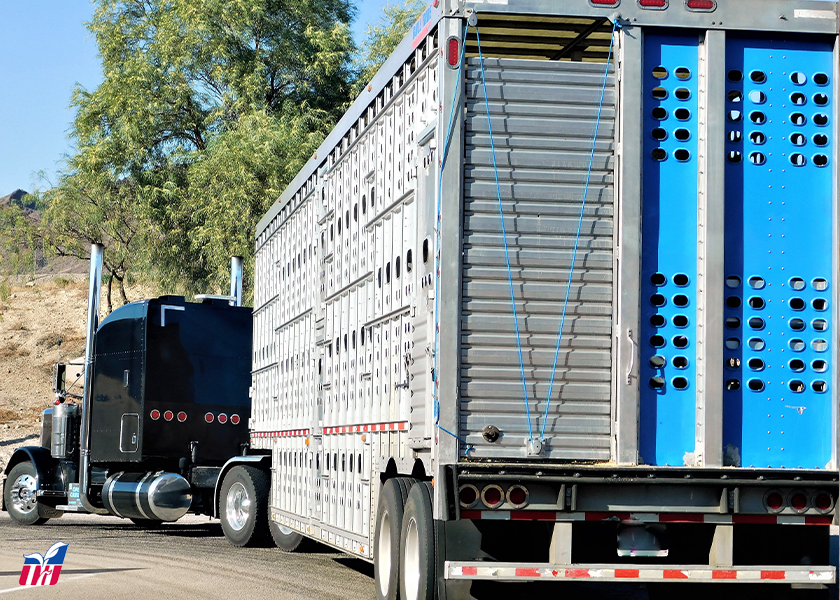Livestock Analysis | December 20, 2023

Advice: We advise livestock producers to extend corn-for-feed and soymeal coverage in the cash market by four weeks through January.
Fundamental analysis: The hog and pork complex seemingly remain under seasonal pressure as hog and pork supplies hover around annual highs, whereas pork demand is uncertain with grocers likely having completed all their purchases for planned year-end holiday features. Pork cutout slipped again, falling $1.29 to $81.77. Sizeable losses in pork bellies, ribs and butts played big roles in the drop, while picnic values posted a surprisingly large advance. Ham prices were firm, offering hope for the winter outlook, especially with processors and grocers probably making a quick start on building supplies for an early Easter (March 31).
One modest surprise came in the form of a slight rise in the lean hog index. As expected, today’s official quote (for Monday) sank 22 cents to $66.37. But Tuesday’s preliminary calculation yielded a 17-cent rise to $66.54. However, the market’s recent history of weakness between Christmas and New Year’s Day suggests it will resume its slide in the days just ahead.
Pre-report surveys anticipating Friday’s quarterly USDA Hogs & Pigs report indicate analysts expect the December U.S. hog population and market hog numbers to fall 0.5% below year-ago levels, with a record-large number of pigs saved per litter during the fall quarter expected to fall short of the year-to-year drop in sows farrowing, thereby producing a fall pig crop 1.7% below year-ago levels. This goes far toward confirming our suspicions that small industry projections of the likely report results caused the apparent shift in the industry outlook seen last week.
Technical analysis: Bears still enjoy the short-term technical advantage in February hog futures. Today’s decline essentially confirmed that view, although the bears’ inability to force a test of support marked by the contract’s 20- and 10-day moving averages near $69.56 and $69.36, respectively, indicates bullish power is increasing. Thus, today’s low of $69.75 seemingly represents initial support. A drop below the 10-day moving average would again have bears targeting the Dec. 13 low of $66.225. Today’s high placed initial resistance at $70.925, with strong backing from the 40-day moving average near $72.14. A breakout above that point would open the door to a test of the psychological $75.00 level.
What to do: Get current with feed advice. Carry all production risk in the cash market for now.
Hedgers: Carry all risk in the cash market for now.
Feed needs: NEW ADVICE -- Extend corn-for-feed and soymeal coverage in the cash market by four weeks through January.
Advice: We advise livestock producers to extend corn-for-feed and soymeal coverage in the cash market by four weeks through January.
Price action: Continued talk of firming cash prices seemed to boost cattle futures Wednesday. Expiring December live cattle futures climbed $1.575 to $170.025, while most-active February gained $1.525 to $170.30. January feeder futures surged $2.15 to $224.05, with the deferred contracts posting even larger advances.
Fundamental analysis: Cattle futures slipped earlier in the week despite talk of firming cash prices this in the days just ahead. Minimal trading to start the week did little to persuade traders in either direction. However, 284 head of Iowa fed steers changed hands at $169.00 Tuesday, which seemingly gave credence to talk of a potential rise in fed cattle prices this week. Thus, futures turned higher despite continued wholesale market slippage. Choice cutout skidded 25 cents to $288.58 at midsession, while select cutout fell $1.74 to $261.42. The choice-select spread at $27.16 is still pointing to a comparative shortage of well-finished cattle and high-quality beef.
Having the feeder index resume its recent bounce Tuesday afternoon. The latest quote at $219.91 represented a daily rise of $2.06. The premiums now built into the deferred contracts may make sustained short-term gains difficult, especially if the cash index were to stall or reverse.
The USDA will release its monthly Cattle on Feed report Friday afternoon (at 2:00 pm CST). It’s expected to state November feedlot placements down 3.8% from year-ago, while November marketings are seen falling 6.7% below year-ago. The net result of those figures would be a December 1 (large-lot) Cattle on Feed population at 11.95 million head, up 2.2% from last year. We think such a result would prove somewhat supportive of cattle futures, with a smaller placement figure potentially sparking a bullish reaction.
Technical analysis: Bears still own the short-term technical advantage in February live cattle futures, but today’s action greatly weakened their grip. That is, the contract bounced strongly from then-initial support at the 10-day moving average near $167.80 and crushed former resistance (and now initial support) at the 20-day moving average of $169.00. A failure at those two short-term moving averages would re-open the door to a test of the Dec. 7 low of $162.40. Conversely, Monday’s high at $171.00 now represents initial resistance. A push above that level would have bulls targeting the pivotal 40-day moving average near $174.37, then the psychologically important $175.00 level. A move above those points would flip the technical advantage to bulls, who would then be looking to test the $180.00 level.
Bulls couldn’t mount a serious challenge of resistance at the January feeder contract’s 40-day moving average near $225.42, which kept the short-term technical advantage in bearish hands. But a push above that point could shift the technical outlook, with bulls likely targeting the $230.00 level in short order. Initial support extends from last Friday’s high at $221.50 to today’s low of $221.225. Support in that area is strongly backed by the contract’s 10- and 20-day moving averages near $218.95 and $218.09, respectively.
What to do: Get current with feed advice. All production risk in the cash market for now but be prepared for some hedge coverage as we have demand concerns.
Hedgers: Carry all risk in the cash market for now.
Feed needs: NEW ADVICE -- Extend corn-for-feed and soymeal coverage in the cash market by four weeks through January.






